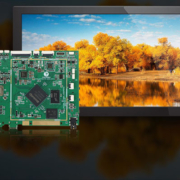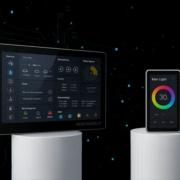What is a Linux Board?
A Linux board refers to a hardware platform or single-board computer (SBC) that is designed to run the Linux operating system (OS). Unlike general-purpose PCs, which often run more complex operating systems like Windows or macOS, Linux boards are typically more compact and focused on specific embedded, industrial, or development applications. These boards often integrate all the essential components of a computer onto a single circuit board, allowing for efficient use of resources, low power consumption, and high versatility.
In this article, we’ll explore what a Linux board is, how it works, its key features, and why it has become an essential tool in many fields, including IoT, embedded systems, robotics, and industrial control.
1. What is a Linux Operating System?
Linux is an open-source, Unix-like operating system that is widely used in servers, desktops, mobile devices, and embedded systems. It is highly customizable, known for its stability, security, and flexibility. Linux is favored in many industrial and development environments due to its ability to be tailored to a wide range of use cases.
2. What is a Linux Board?
A Linux board is a hardware platform specifically designed to run the Linux OS. It typically comes as a single-board computer (SBC), which integrates a CPU, RAM, storage, and I/O ports all on one board. These boards can be used to create embedded systems, IoT devices, industrial control systems, and more.
Linux boards run a Linux-based OS (such as Ubuntu, Debian, or Yocto), and they often come with various features and interfaces like GPIO pins, UART, I2C, SPI, HDMI, Ethernet, and more, which make them ideal for embedded and industrial applications.
3. Key Features of a Linux Board
1. Compact and Integrated Design
A Linux board typically features a single-board design, meaning all components like the CPU, RAM, and I/O ports are integrated onto one compact board. This integration makes Linux boards more space-efficient and cost-effective compared to traditional desktop computers.
2. Open Source and Customizability
Linux boards are designed to run open-source Linux OS, which can be customized based on specific needs. This flexibility allows developers to modify the OS and software for tailored solutions. Custom operating systems can be developed, or existing ones like Debian, Ubuntu, or Android can be used, depending on the project’s needs.
3. Low Power Consumption
One of the standout features of Linux boards is their ability to run on low power. This makes them ideal for embedded systems, IoT devices, and battery-operated applications, where power efficiency is a critical factor.
4. Connectivity and Expansion
Linux boards are equipped with a variety of ports and interfaces, including USB, Ethernet, HDMI, Wi-Fi, Bluetooth, and sometimes even cellular connectivity. Many boards also offer GPIO pins and other expansion options that allow developers to interface with sensors, motors, and other external hardware.
5. Support for Development Tools
Linux boards come with robust development support. With the Linux OS being open-source, a wide variety of tools and libraries are available for developers. This support makes it easier to develop and integrate applications, whether for simple IoT devices or complex industrial control systems.
4. Popular Linux Boards in the Market
While many Linux boards are available, some stand out due to their performance, versatility, and community support. Here are some of the most popular Linux boards:
Raspberry Pi
- Processor: Broadcom BCM2711 (Quad-core ARM Cortex-A72)
- RAM: 2GB, 4GB, or 8GB options
- Storage: microSD card
- Best For: Education, DIY projects, prototyping
- OS: Raspbian (Linux-based), other distributions like Ubuntu, Kali Linux
- Why It’s Great: The Raspberry Pi is one of the most popular Linux boards due to its low cost, community support, and flexibility. It is ideal for hobbyists, students, and developers working on various applications like robotics, home automation, and digital signage.
BeagleBone Black
- Processor: AM335x 1GHz ARM Cortex-A8
- RAM: 512MB DDR3
- Storage: 4GB eMMC, microSD card
- Best For: Industrial applications, robotics, embedded systems
- OS: Debian Linux, Ubuntu
- Why It’s Great: The BeagleBone Black is widely used in industrial and commercial applications. It offers real-time processing capabilities, many I/O options, and robust Linux support, making it perfect for embedded systems and applications that require a high level of control.
Odroid XU4
- Processor: Samsung Exynos 5422 (Octa-core ARM Cortex-A15)
- RAM: 2GB LPDDR3
- Storage: 16GB eMMC, microSD card
- Best For: Media servers, home automation, AI applications
- OS: Ubuntu, Android
- Why It’s Great: With its powerful octa-core processor and extensive I/O options, the Odroid XU4 is a great choice for high-performance Linux-based applications. It supports a variety of uses, including media centers, home automation, and machine learning.
Portworld P6802 RK3568 Mainboard
- Processor: Rockchip RK3568 (Quad-core ARM Cortex-A55)
- RAM: 4GB/8GB DDR4
- Storage: eMMC, microSD card, PCIe storage
- Best For: Industrial applications, smart home solutions, digital signage
- OS: Android, Ubuntu, Debian
- Why It’s Great: The Portworld P6802 is a robust Linux board designed for high-performance, low-power industrial applications. It supports various operating systems like Ubuntu, Debian, and Android, making it suitable for a wide range of use cases, from embedded control systems to IoT devices and digital signage solutions.
5. Use Cases for Linux Boards
Linux boards are used in a wide variety of applications, including:
1. Embedded Systems
Linux boards are often used in embedded systems, where space, power, and customization are crucial. These boards can run real-time applications, interface with sensors and actuators, and handle various tasks in fields like industrial automation, robotics, and automotive systems.
2. Internet of Things (IoT)
In IoT applications, Linux boards serve as the backbone of many connected devices. They can handle communication protocols like MQTT, HTTP, and CoAP, allowing them to interact with other devices or the cloud.
3. Digital Signage and Media Centers
Linux boards like the Raspberry Pi and Odroid XU4 are commonly used for digital signage applications due to their low cost and high versatility. They can run media player software and provide rich multimedia experiences for retail and advertising.
4. Educational Projects
Linux boards are ideal for learning and prototyping, especially for students and hobbyists. Their low cost, easy-to-use interfaces, and large developer communities make them a great choice for educational institutions.
6. Why Choose a Linux Board?
Linux boards offer many advantages for both developers and end-users:
- Cost-effective: Linux boards are typically low-cost compared to traditional desktop computers, making them ideal for budget-conscious projects.
- Flexibility: With the open-source nature of Linux, you can customize the OS and software to meet your specific needs.
- Wide Community Support: The popularity of Linux means there is a large community of developers and resources available to help troubleshoot and support development.
- Low Power Consumption: Linux boards are energy-efficient, making them ideal for battery-powered or remote applications.
A Linux board is a versatile and powerful tool for developers, engineers, and hobbyists. Whether you’re creating an embedded system, an IoT device, or a media center, Linux boards offer a wide range of capabilities, customization options, and community support. From the well-known Raspberry Pi and BeagleBone Black to the powerful Portworld RK3568 mainboard, there are plenty of options available to suit your specific needs.



